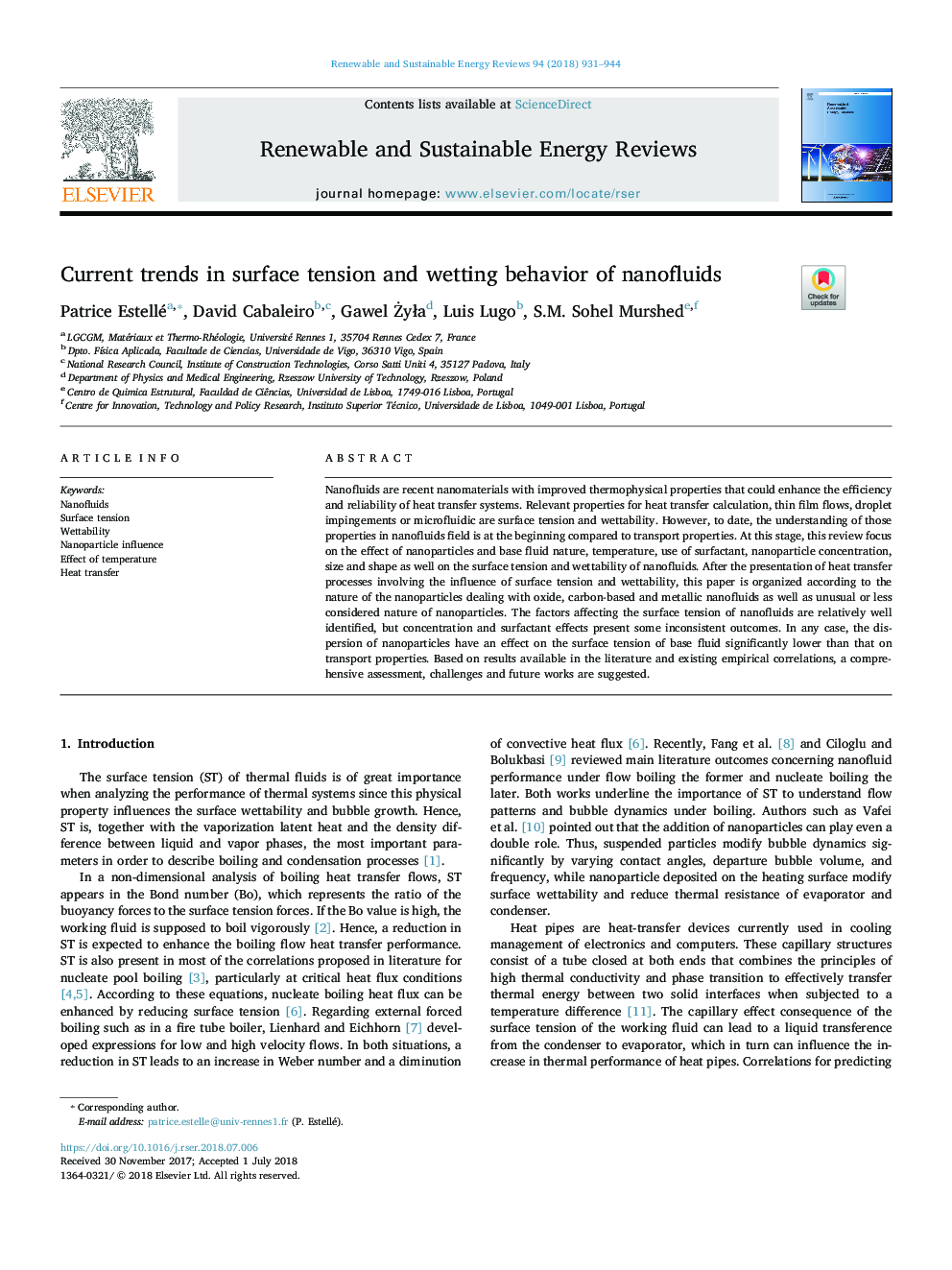| Article ID | Journal | Published Year | Pages | File Type |
|---|---|---|---|---|
| 8110570 | Renewable and Sustainable Energy Reviews | 2018 | 14 Pages |
Abstract
Nanofluids are recent nanomaterials with improved thermophysical properties that could enhance the efficiency and reliability of heat transfer systems. Relevant properties for heat transfer calculation, thin film flows, droplet impingements or microfluidic are surface tension and wettability. However, to date, the understanding of those properties in nanofluids field is at the beginning compared to transport properties. At this stage, this review focus on the effect of nanoparticles and base fluid nature, temperature, use of surfactant, nanoparticle concentration, size and shape as well on the surface tension and wettability of nanofluids. After the presentation of heat transfer processes involving the influence of surface tension and wettability, this paper is organized according to the nature of the nanoparticles dealing with oxide, carbon-based and metallic nanofluids as well as unusual or less considered nature of nanoparticles. The factors affecting the surface tension of nanofluids are relatively well identified, but concentration and surfactant effects present some inconsistent outcomes. In any case, the dispersion of nanoparticles have an effect on the surface tension of base fluid significantly lower than that on transport properties. Based on results available in the literature and existing empirical correlations, a comprehensive assessment, challenges and future works are suggested.
Related Topics
Physical Sciences and Engineering
Energy
Renewable Energy, Sustainability and the Environment
Authors
Patrice Estellé, David Cabaleiro, Gawel Å»yÅa, Luis Lugo, S.M. Sohel Murshed,
